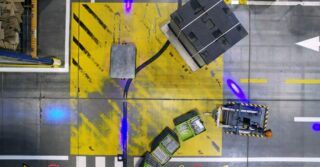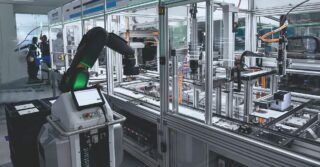More and more companies are opting for the implementation of robotic systems in their production processes. The benefits are numerous, ranging from increased safety levels and productivity to greater repeatability and reduced dependence on personnel. However, a lack of awareness about crucial implementation stages can lead to choosing the wrong integrator and, consequently, an unprofitable investment.
This article is for you if:
- You want to learn how to implement robotics that genuinely enhance your production
- You aim to increase production efficiency in your facility
- You are preparing for the implementation of industrial robots
- You are looking for specific guidance to ensure successful implementation
What to consider when choosing a robot integrator?
Choosing a robot integrator is a key step that can impact the success of implementing robotic workstations and, consequently, the operational efficiency and competitiveness of the enterprise.
Let’s go through the key stages of the implementation project and examine what to pay attention to, both from the client’s and the integrator’s perspective. This holistic view will help us better understand the entire process and avoid potential risks on the road to success.
Local Production Vision (Stage 1)
The local vision, carried out by the industrial robot integrator, primarily involves understanding the needs of the manufacturing facility. At this stage, the integrator must ask questions about the key reasons for interest in robotics, the needs, and the problems of the facility because without this, a common vision will not be established.
Moreover, this brings extremely important benefits:
- it allows the integrator to focus on solving the facility’s problems, and the facility will be assured of being on the right path
- the integrator can look more broadly at the processes of the entire facility. They will be able to advise on the choice of a solution much more accurately
Based on their experience, the integrator can roughly outline what works in the industry, but for each specific case, a deeper analysis is needed.
Analysis of Manufacturing Processes and Customer Needs (Stage 2)
In the preliminary analysis of needs before implementation, the number of produced details is determined to estimate the workload of the robotic workstation. The specific efficiency of the production process must be assumed before starting the project; this is one of the most important parameters that sets the goal for the implementation.
The crucial aspect at the analysis stage is to spend an adequate amount of time determining the actual requirements of the planned investment. This ensures that it is optimal according to the needs and does not multiply costs through later redesign or mismatch.
Additionally, the integrator and the client can find a way to finance the investment through leasing, credit, or grants at this stage. Therefore, choosing a robotics integrator who can provide the right local vision, analyze customer needs, and offer comprehensive advice before implementation is crucial.
Concept and Design – Selection of Robotic System (Stage 3)
The next stage involves selecting the appropriate technology and preparing the concept by the integrator. It’s essential to note that choosing the right system allows for a cost-effective increase in the efficiency of the production process as needs grow during the use of the line. Besides, the proper placement of machines and equipment allows for space savings on the production floor and future line expansion.
For ready-made robotic solutions, the design process takes considerably less time for mechanical designers, roboticists, or automation specialists, directly reducing costs for the manufacturing company. At this stage, the integrator should provide return on investment calculations to assure the client that the proposed concept has business justification.
A company implementing robotic production processes should rely on specific industrial automation suppliers that allow for employee training.
Having a properly trained staff capable of quickly and effectively resolving failures and introducing modifications to their machines will impact project completion time and the quality of machine and equipment service.
Products of appropriate quality in automation but also in mechanics and electrical materials guarantee longer lifespan of devices and machines, which consist of even hundreds of elements from various suppliers. Needless to say, nobody likes failures that generate downtime, directly translating into losses.
How do simulations of robotic workstations translate into lower implementation costs? (Stage 4)
Integrators use programs to simulate robotic workstations. In the case of companies dealing with complex projects, i.e., having teams of automation specialists, roboticists, designers, electrical designers, or electromechanics, software for mechanical and durability simulations in CAD programs is also used, as well as electrical projects, e.g., in eplan.
When the entire scope of work is done by a single solution provider, it saves time on communication between different subcontractors, and therefore, reduces the overall project costs. Additionally, it eliminates the problem of diffused responsibility for individual implementation stages.

Simulation of workstation stages helps test planning assumptions (including process efficiency), verify the correctness of designed models of technological devices, or optimally arrange industrial robots and devices cooperating with them—ensuring no collisions between them, and allowing safe and unimpeded access to process points for robots.
Moreover, simulations help predict the behavior of robots and cooperating devices, as well as the control method. This minimizes the time that would be spent on these activities in real workstation tests, shortening the project timeline.
Testing – Optimization of Robotic Functionalities (Stage 5)
Before the line is put into operation at the client’s production floor, one of the most crucial stages is testing. Typically, the assembly of the solution and testing its behavior under conditions physically corresponding to the production process takes place on the integrator’s assembly floor. This is the moment to optimize functionalities and secure the process against threats previously impossible to simulate.
This stage requires adequate resources on both the integrator’s and the client’s sides. This includes not only personnel but also high-quality and sufficient production material needed to start the line with the required performance. Both parties aim for the fastest possible optimization of line operation in the process.
Just before transporting all machines and equipment to the client, the solution undergoes tests with the client’s employees involved. Often, at this stage, formal production tests, the so-called FAT (Factory Acceptance Test), are formally conducted, confirming compliance with the required parameters and client requirements according to predefined criteria. After this stage, the client can finish preparations for installing the line at their facility.
Assembly and Commissioning of the Line – Facility Preparation (Stage 6)
Determining the assembly time on the production floor is a significant factor for the timely launch of the line. Firstly, the client should plan the launch (if possible) during a period when production operates with the lowest efficiency. The assembly and configuration of systems in production take their time. Secondly, it should be remembered that proper assembly is only possible in a properly prepared final location.
In theory, everything should go according to the expectations built on tests at the integrator’s. However, experience shows that not everything can be predicted, and, for example, the assembly site may not align with the client’s assumptions – for example, foundations under the structure must be prepared properly, or access to power sources must be ensured.
Hall preparations depend on the project’s specifics. The integrator, in cooperation with the client, should consider this stage already during the conceptual design so that the client can prepare the hall well in advance and avoid delays in implementation deadlines. Coordinating activities at this stage is crucial to avoid misunderstandings.
Acceptance of Robotic Workstations (Stage 7)
In addition to final performance and quality tests of the line, handing it over for acceptance also involves training the client’s employees in operating robotic workstations and maintaining machines and cooperating devices. This ensures smooth operation, efficient troubleshooting, and minimized line downtimes.
The line production manager, who will learn everything about the new process, should also be a mandatory participant in the training. The integrator should be committed from the beginning of the project to conduct training and provide an operating manual containing information on all aspects of line operation and maintenance. This is the foundation for any potential warranty service.
Key Success Factors for Implementing Production Robotics
In summary, the key success factors for implementing production robotics are:
- an integrator’s approach focused on the needs and problems of the manufacturing facility
- setting realistic and specific requirements and final goals
- choosing a suitable system enabling a quick and effective increase in production process efficiency
- active collaboration between the client and the integrator in system testing
- adequately prepared space for assembling the solution in the production hall
- training of staff responsible for operating robots and the entire line
- training of staff responsible for servicing and maintaining equipment
- training of staff with information about workstation parameters delivered by the solution
Ultimately, the return on investment is the most important project indicator, and meeting this goal should be the aim from the very beginning of the project.


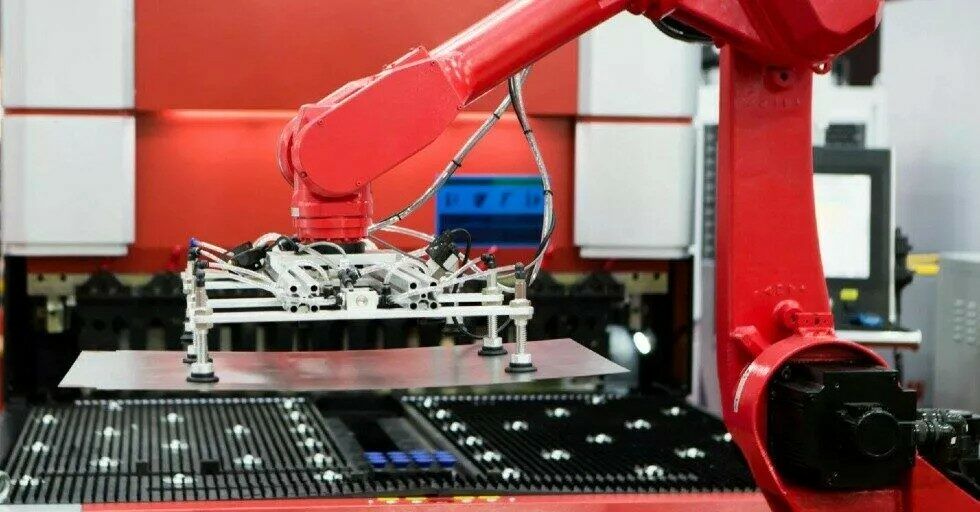
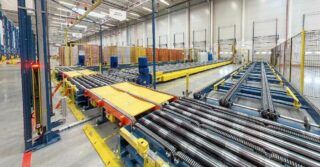
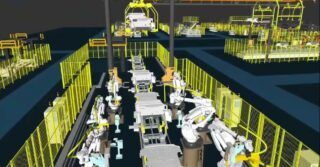
![Forecasts, Opportunities, and Challenges for the Polish Industry in 2024 [ANALYSIS] Forecasts, Opportunities, and Challenges for the Polish Industry in 2024 [ANALYSIS]](https://industryinsider.eu/wp-content/uploads/xIndustry-40-320x167.jpg.pagespeed.ic.o8zijDQlIJ.jpg)
